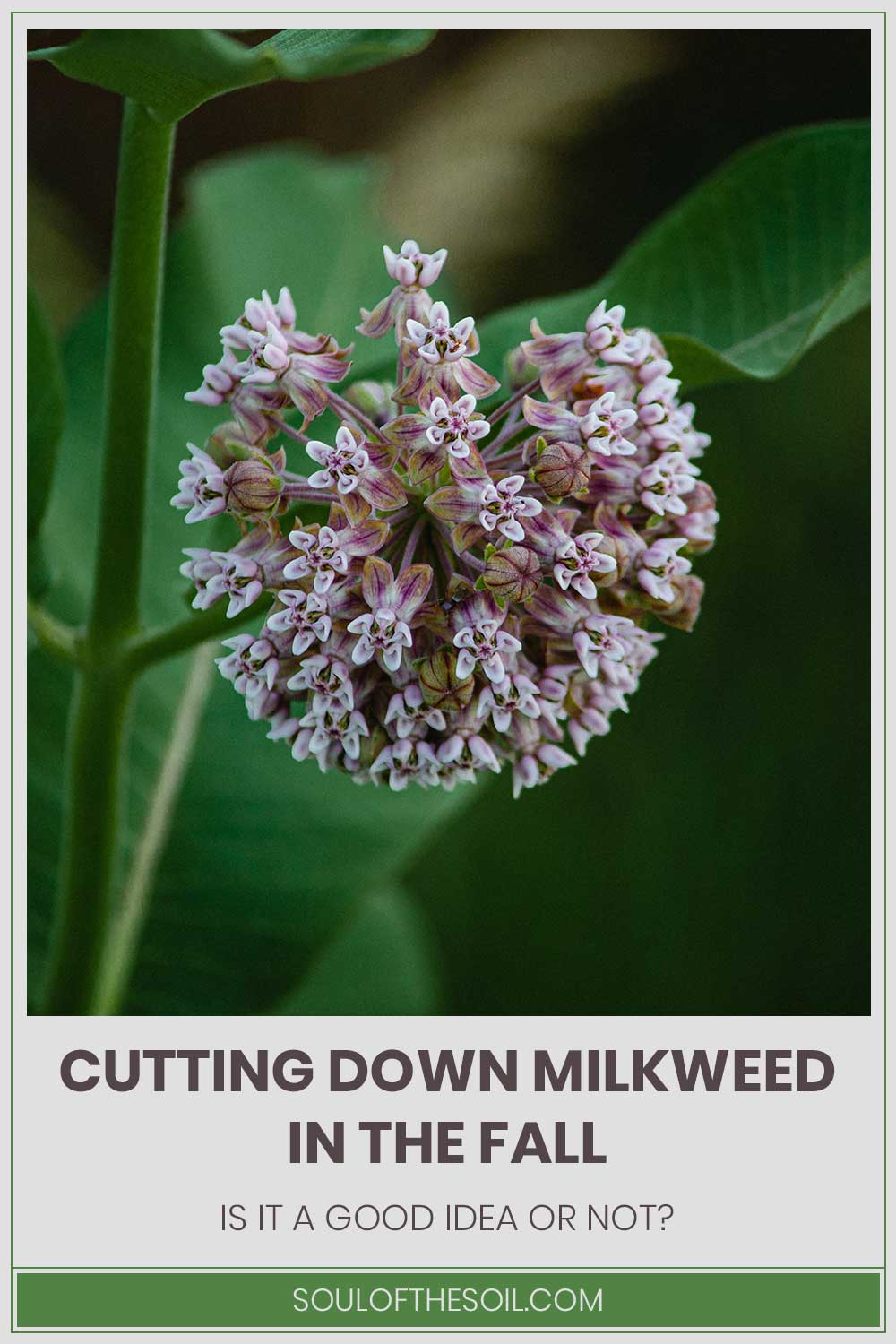Cutting Down Milkweed In The Fall – Is it a Good Idea or Not?
We may earn commissions for purchases made through links on our site. Learn more on our about us page.
Milkweeds might be one of the more interesting plants you’ll come across. While the plants are considered poisonous, they have still been used for medical purposes within indigenous tribes and remain the exclusive food source for many milkweed butterflies.
While the plants have had their decline within agricultural development, it’s encouraged by conservation groups to plant the milkweed in areas where it is native. I know what you think if milkweed is encouraged to be planted, why would we cut it down?
Let’s talk more about everything you need to know about cutting milkweed down in the fall and winter seasons.

Why Should You Cut Milkweed in the Fall?
It’s important to cut and prune milkweed in the colder seasons, like the fall or the winter.
This is because many monarch butterflies will choose not to migrate if the milkweed is not pruned. In addition, cutting down the milkweed will act as a sign to tell the butterfly it’s time to move on, ultimately leading to saving the species itself.
How Do You Need To Cut Down Milkweed in the Fall?
First of all, it’s important to wear your gloves for this process. Mainly because the milkweed sap or contents will irritate your skin during the cutting process.
To cut down the milkweed, identify the flower bunches and cut those above the leaves on the stem. If cared for properly, the milkweed can live for up to 7 years.
What Happens If You Don’t Cut Down Milkweed in the Fall?
Two things could happen if you don’t cut down the milkweed in the fall. One, it might cause issues for the monarch butterflies. If they choose not to migrate due to the milkweed, they could attempt to build winter colonies that will not survive through the winter.
Another thing that could happen if you don’t cut down your milkweed is that the plant itself will not maintain its ultimate lifespan. If the plant is not taken care of, there’s a chance it could get out of control to a point where the milkweed will not survive.
What Needs to Happen Before You Cut Down Milkweed During Fall?
Not only does there need to be a season change before cutting doesn’t or pruning your milkweed, but it’s also best to wait until you begin seeing fewer and fewer of those butterflies who feed off of the milkweed.
The most important thing that needs to happen before you cut down the milkweed is to allow it to grow and produce seed pods and allow them to mature.
What Will Happen to Milkweed After You Cut It Down In The Fall?
The leaves and stems of the milkweed will die down. However, it’s the plant’s roots that will stay alive and in good condition, in a dormant state.
Then the plant is likely to regrow in the spring, and if the pruning is done correctly, the milkweed’s flowers will bloom once again, ready to serve those who utilize it as a food source.
Final Thoughts on Cutting Down Milkweed In The Fall
It’s important to cut down or prune the milkweed in the fall or even the winter in order to maintain a healthy population of monarch butterflies and also to keep the plant strong and healthy for the following seasons.
Cut down the milkweed’s flower bunches and also leave about 6 inches of plant from the milkweed’s base of the soil.



Leave a Reply
You must be logged in to post a comment.